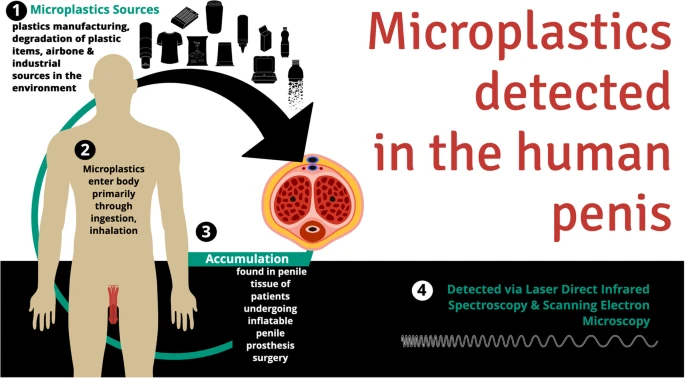
The proliferation of microplastics (MPs) represents a burgeoning environmental and health crisis. Measuring less than 5 mm indiameter, MPs have infiltrated atmospheric, freshwater, and terrestrial ecosystems, penetrating commonplace consumables likeseafood, sea salt, and bottled beverages. Their size and surface area render them susceptible to chemical interactions withphysiological fluids and tissues, raising bioaccumulation and toxicity concerns. Human exposure to MPs occurs through ingestion,inhalation, and dermal contact. To date, there is no direct evidence identifying MPs in penile tissue. The objective of this study wasto assess for potential aggregation of MPs in penile tissue. Tissue samples were extracted from six individuals who underwentsurgery for a multi-component inflatable penile prosthesis (IPP).[…]Seventypes of MPs were found in the penile tissue, with polyethylene terephthalate (47.8%) and polypropylene (34.7%) being the mostprevalent. The detection of MPs in penile tissue raises inquiries on the ramifications of environmental pollutants on sexual health.Our research adds a key dimension to the discussion on man-made pollutants, focusing on MPs in the male reproductive system.IJIR: Your Sexual Medicine Journal; https://doi.org/10.1038/s41443-024-00930-6
Source: Detection of microplastics in the human penis | International Journal of Impotence Research

Robin Edgar
Organisational Structures | Technology and Science | Military, IT and Lifestyle consultancy | Social, Broadcast & Cross Media | Flying aircraft
robin@edgarbv.com
https://www.edgarbv.com
